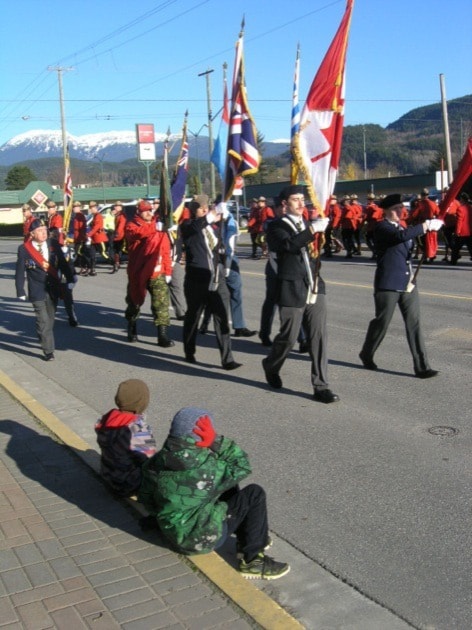By Allan Levine
Way, way back in the spring of 1976 when I was preparing for a trek through Europe, I sewed a small Canadian red maple leaf flag on the top of my backpack like every other student of my generation. Because the last thing I wanted on my travels was to be mistaken for an American.
Canadians might not be as patriotic as Americans. Yet on certain occasions, whether it is traipsing through Europe, cheering on Canadian athletes during the Olympics or honouring the military, we really do “stand on guard for thee” and take great pride in the country’s distinctive flag.
Fifty years ago, on Feb. 15, 1965, it was a slightly different story when then prime minister Lester Pearson presided over the official raising of the new maple leaf flag at a ceremony in Ottawa, replacing the Red Ensign that had been the country’s semi-official flag for decades. Most Canadians welcomed the new design. But it was also (incorrectly) regarded especially by John Diefenbaker, the Progressive Conservative leader of the Opposition, and many veterans as a rejection of Canada’s British roots.
Even before Pearson headed a minority Liberal government following the election of 1963, he had supported a new flag. Later, faced with growing Quebec nationalism and anticipating the centennial of Confederation in 1967, he firmly believed the time had come for the country to have a flag of its own. Pearson was as pro-British as any English-speaking politician of that era; in his thinking, he was simply advancing the country’s national interests in a real and symbolic way.
Pearson gave the job of researching a new flag to Ontario MP John Matheson, a lawyer with knowledge of heraldry. By the spring of 1964, Matheson with advice from Pearson and help from Alan Beddoe, an artist and veteran, had settled on a new Canadian flag with two blue vertical bars — symbolizing Canada’s motto of “from sea to sea” — and three red maple leaves in the middle. Pearson was delighted with it, though his opponents mocked the design as the “Pearson pennant.”
Winnipeg played a starring role in the ensuing flag debate. On May 17, 1964, Pearson was in the city to speak at the Royal Canadian Legion’s national convention being held at the old Capitol Theatre. And many of the veterans, who cherished the Red Ensign, were not in a gracious mood after Pearson unveiled his choice for a new flag.
More than six months of acrimonious debate ensued. Finally in mid-September 1964, Pearson obtained Diefenbaker’s support for a parliamentary committee to study the flag further. The all-party committee, headed by Matheson, was given six weeks to come up with an acceptable compromise. In the meantime, ordinary Canadians took up the challenge of creating a new flag and more than 3,500 designs were submitted with Union Jacks, fleur-de-lis, and beavers, among many other icons and symbols.
Matheson had also consulted with historian George F.G. Stanley. It was Stanley who came up with a single red maple leaf on a white background with two vertical red bars.
At the end of October, when the committee members voted on their choice for a design, the Conservatives mistakenly concluded the Liberals would vote for the “Pearson pennant,” so opted for Stanley’s red and white design.
Yet Pearson, who feared a split vote, had ordered the Liberals to vote for Stanley’s flag as well. And that was the flag design ultimately voted on by Parliament.
Still another two weeks of rancorous debate followed and the Liberals were forced to resort to closure (supported by the NDP and Social Credit parties) to end the debate. On Dec. 15, 1964, at 2 a.m., the Liberal motion on Canada’s new red and white Maple Leaf flag passed by a vote of 163 to 78.
Though the adoption of a new flag prompted much commentary in the press about Canada’s coming of age, the flag did not unite the country as Pearson had hoped. A few months earlier, Pierre Trudeau, still a Montreal law professor, remarked “French Canada did not give a ‘tinker’s damn’ about the flag.” That was likely true, and a new flag did not halt the growth of the Quebec separatist movement.
Nor was the flag responsible for weakening Canada’s British connection and pushing us into the hands of the Americans, as its detractors claimed. That process had begun many decades earlier and given geography and the realities of trade was inevitable. In hindsight, the flag had little to do with it; if anything the Maple Leaf flag solidified Canada’s Britishness.
That’s the view of historian C.P. Champion. His research has persuasively shown the choice of the maple leaf for Canada’s flag as well as the eventual choice of the colours red and white had deep British traditions.
Five decade ago, such an academic argument would have made little difference to either Pearson or Diefenbaker.
The flag ceremony on Feb. 15, 1965, was for Lester Pearson, a proud moment — his proudest as prime minister according to his wife Maryon — while a news photo published the next day showed Diefenbaker shedding a tear.
Allan Levine is a historian, author and a freelance writer living in Winnipeg, Manitoba.
